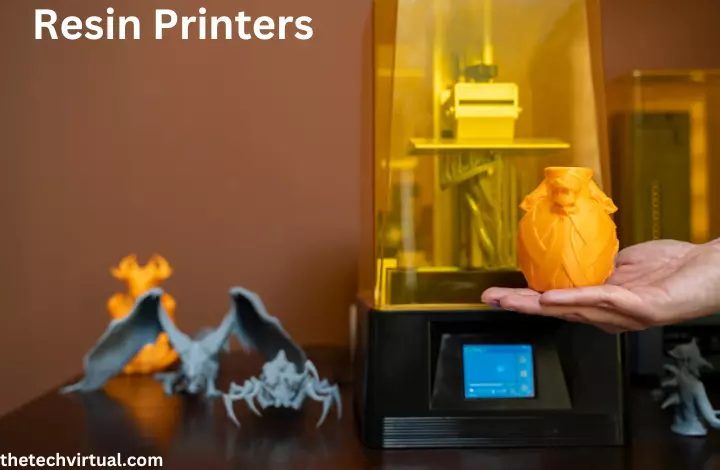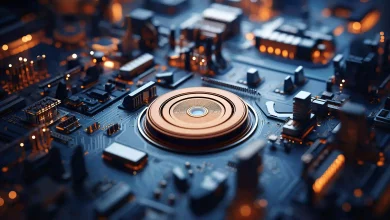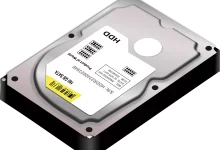Benefits Of 300 x 300 x 250mm Resin Printers – A Comprehensive Guide

Introduction to 300 x 300 x 250mm Resin Printers
300 x 300 x 250mm resin printers are a type of 3D printer that use a liquid resin material to create three-dimensional objects. These printers are capable of producing high-quality prints with intricate details and smooth surfaces. The dimensions of 300 x 300 x 250mm refer to the maximum build volume of the printer, which means it can create objects with dimensions up to 300mm in length, 300mm in width, and 250mm in height.
Resin printing technology has been around for several decades, but it has gained popularity in recent years due to advancements in materials and printing techniques. The process involves using a liquid resin that is cured by a light source, typically a UV light, to solidify the material layer by layer. This allows for the creation of complex geometries and fine details that are not possible with traditional printing methods.
One of the main advantages of using resin printers over traditional printing methods is the level of detail and precision that can be achieved. Resin printers are capable of producing prints with resolutions as high as 25 microns, which means that even the smallest details can be accurately reproduced. Additionally, the smooth surface finish of resin prints makes them ideal for applications where aesthetics are important, such as jewelry, figurines, and prototypes.
High-Quality Prints with 300 x 300 x 250mm Resin Printers
300 x 300 x 250mm resin printers are known for their ability to produce high-quality prints with exceptional detail and surface finish. This is due to the nature of the resin printing process, which allows for the creation of intricate geometries and fine details that are not possible with other printing technologies.
Unlike filament-based printers, which deposit layers of melted plastic to build up an object, resin printers use a liquid resin material that is cured by a light source. This allows for the creation of prints with smooth surfaces and sharp edges, as well as the reproduction of fine details such as textures and patterns.
Compared to other printing technologies such as FDM (Fused Deposition Modeling) or SLA (Stereolithography), resin printers offer superior resolution and accuracy. The layer height of resin prints can be as low as 25 microns, which means that even the smallest details can be accurately reproduced. This makes resin printers ideal for applications where precision is crucial, such as dental models, architectural models, and engineering prototypes.
Faster Printing Speeds with 300 x 300 x 250mm Resin Printers
In addition to producing high-quality prints, 300 x 300 x 250mm resin printers are also known for their fast printing speeds. This is due to the nature of the resin printing process, which allows for the simultaneous curing of multiple layers of resin.
Unlike filament-based printers, which deposit layers of melted plastic one at a time, resin printers can cure an entire layer of resin at once. This means that multiple layers can be cured simultaneously, resulting in faster printing speeds. Additionally, the curing process itself is relatively quick, with each layer taking only a few seconds to cure.
Compared to other printing technologies such as FDM or SLA, resin printers offer significantly faster printing speeds. This is especially beneficial for large-scale projects or time-sensitive applications where speed is a priority. For example, in the field of dentistry, where dental models need to be produced quickly for patient treatment planning, resin printers can significantly reduce the turnaround time.
Cost-Effective Printing with 300 x 300 x 250mm Resin Printers
While the initial cost of a 300 x 300 x 250mm resin printer may be higher compared to other printing technologies, resin printers can actually save money in the long run. This is due to several factors, including the lower cost of resin materials and the ability to print complex geometries without the need for support structures.
Resin materials used in 300 x 300 x 250mm printers are generally more affordable compared to other printing materials such as filaments or powders. Additionally, resin printers are capable of printing complex geometries without the need for support structures, which can save both time and material costs. This is because resin prints are self-supporting during the printing process, allowing for the creation of intricate designs without the need for additional support structures that would need to be removed later.
Furthermore, resin printers have a higher material utilization rate compared to other printing technologies. This means that less material is wasted during the printing process, resulting in lower material costs. Additionally, resin prints have a higher success rate compared to other printing technologies, which means that fewer prints need to be reprinted due to failed prints or errors.
Maintenance and Care of 300 x 300 x 250mm Resin Printers
Proper maintenance and care are essential for the longevity and optimal performance of 300 x 300 x 250mm resin printers. Here are some tips for maintaining and caring for resin printers:
1. Regularly clean the build plate and resin tank: Resin printers require regular cleaning to remove any residue or cured resin that may affect print quality. This can be done by wiping the build plate and resin tank with a soft cloth or sponge soaked in isopropyl alcohol.
2. Replace the resin tank and build plate as needed: Over time, the resin tank and build plate may become worn or damaged, which can affect print quality. It is important to regularly inspect these components and replace them as needed.
3. Store resin properly: Resin materials should be stored in a cool, dry place away from direct sunlight. Exposure to heat or UV light can degrade the resin and affect print quality.
4. Follow manufacturer’s guidelines for resin handling and disposal: Resin materials can be hazardous if not handled properly. It is important to follow the manufacturer’s guidelines for handling, storing, and disposing of resin materials to ensure safety.
5. Keep the printer firmware and software up to date: Manufacturers often release firmware and software updates to improve the performance and functionality of resin printers. It is important to regularly check for updates and install them as needed.
Common issues that may arise with resin printers include failed prints, print adhesion issues, and resin leakage. These issues can often be resolved by troubleshooting techniques such as adjusting print settings, cleaning the build plate, or replacing worn components. It is important to consult the manufacturer’s documentation or seek professional assistance if issues persist.
Conclusion: Why 300 x 300 x 250mm Resin Printers are a Great Investment
In conclusion, 300 x 300 x 250mm resin printers offer a range of benefits that make them a great investment for various printing needs. These printers are capable of producing high-quality prints with exceptional detail and surface finish, making them ideal for applications where precision and aesthetics are important.
Additionally, resin printers offer faster printing speeds compared to other printing technologies, allowing for quick turnaround times and increased productivity. The ability to print complex geometries without the need for support structures also makes resin printers cost-effective, as it reduces material waste and printing time.
Proper maintenance and care are essential for the longevity and optimal performance of 300 x 300 x 250mm resin printers. By following the manufacturer’s guidelines and regularly cleaning and inspecting the printer, users can ensure that their printer remains in good condition and continues to produce high-quality prints.
Overall, investing in a 300 x 300 x 250mm resin printer is a smart decision for those looking to achieve high-quality prints, faster printing speeds, and cost-effective printing. With advancements in resin materials and printing techniques, resin printing technology is expected to continue to evolve and offer even more benefits in the future.






